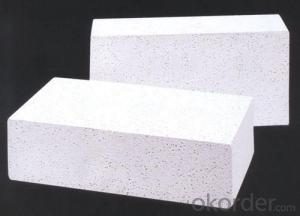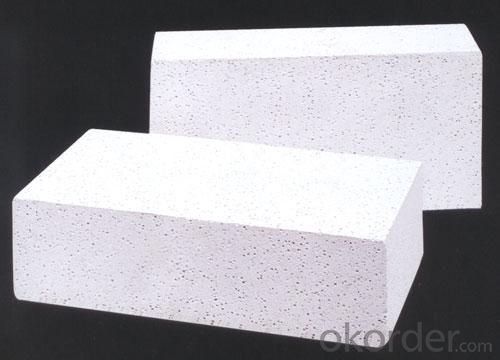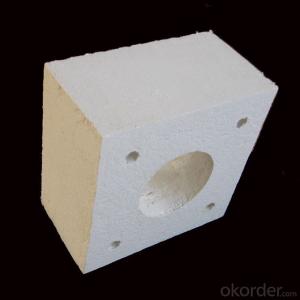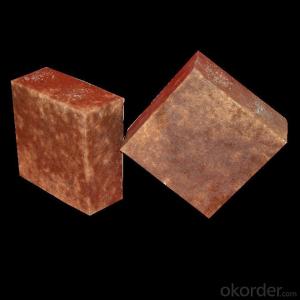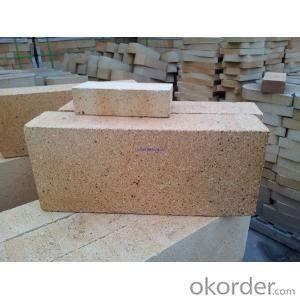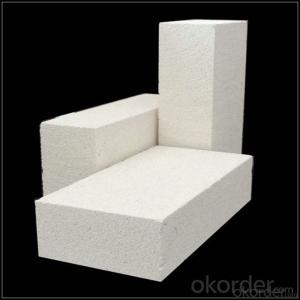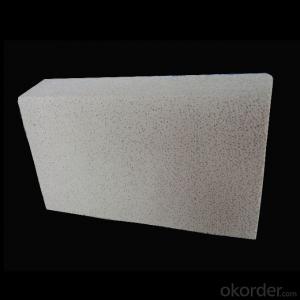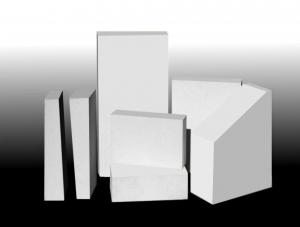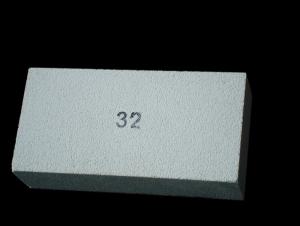Insulating Fire Brick for Steel Ladle Refractory Insulation
- Loading Port:
- Shanghai
- Payment Terms:
- TT OR LC
- Min Order Qty:
- 500 m.t.
- Supply Capability:
- 1000 m.t./month
OKorder Service Pledge
OKorder Financial Service
You Might Also Like
1.With high strength, high refractoriness, strong erosion resistance.
2.Can be customized according to customer's drawings for production.
3.The well block is suite with the nozzle , it can use in the steel making and the foundry,the tundish and ladle all can use it.The well block has long service life, no crack and no leak.
4. The well block use main the material with the high content of carbon and almnium or the zirconic.
5.We can produce the different shape according to the requirement of the client.
Refractory brick can be divided into three process: Raw material, molding, burning.Generally, refractory brick was molded by dry pressing. By means of mixing the material uniformity in proportion and aging mixture some time. Then, pour some powders into the module and dry pressing. After dry pressing, the adobe need to pushed in the drying kiln to stoving or stay in the air to drying. This progress will need about 3-5 days. After this progress, then push the adobe into the tunnel furnace or shuttle kiln to burning around 1300C. This progress will be need about 5-7 days.
After burning, the brick will be packed in pallet and leave the factory.
Item | Refractory Brick |
Applications | • Industrial furnace, glass furnace. • Chemical industrial furnace • Utility industry furnace lining. • Heat insulation ventilation wall. |
Features | • Resistance to High temperature, Resistance to erosion, resistance to abrasion • Excellent compression strength • Resistance to acid and alkali. • Excellent heat stability. |
- Q: The project cost in hydropower No.3 shaft wall is solid brick or insulating brick?
- Aerated concrete for external walls is to save money. One side is the outer wall.. Solid bricks are the first thing, safety comes first.
- Q: What is the typical modulus of rupture of an insulating fire brick?
- The typical modulus of rupture of an insulating fire brick can vary depending on the specific composition and manufacturing process of the brick. However, on average, the modulus of rupture for insulating fire bricks typically ranges from 1 to 10 megapascals (MPa). This means that these bricks can withstand a bending force or pressure of 1 to 10 MPa before fracturing or breaking. It is important to note that the modulus of rupture can be influenced by factors such as the density, porosity, and chemical composition of the insulating fire brick.
- Q: Do insulating fire bricks have a low density?
- Yes, insulating fire bricks have a low density compared to other types of bricks. These bricks are designed to have a porous structure, which helps in reducing heat transfer and increasing insulation properties. The low density of insulating fire bricks allows them to provide effective thermal insulation while also being lightweight. This makes them suitable for various applications where heat retention and energy efficiency are important, such as in kilns, furnaces, and fireplaces.
- Q: What is the difference between cement foamed thermal insulation board and thermal insulating brick?
- 1, cement foam insulation board, as its name says, is "board", it is used on the exterior wall or roof, that is, the grass-roots has been done, and put a plywood outside, you can achieve the effect of insulation;2, insulation brick, mainly brick, it can be directly wall masonry, wall completed, the insulation effect is reflected.
- Q: Can insulating fire bricks be used in chimneys and flues?
- Insulating fire bricks are designed specifically for high-temperature usage and are commonly employed in industrial settings, furnaces, and kilns. While they possess exceptional insulating properties, they may not be the optimal choice for chimneys and flues in residential or commercial buildings. The primary reason for this is that insulating fire bricks lack the durability and heat resistance found in other materials specifically designed for chimney and flue construction. They have the potential to crack or break when subjected to the extreme heat and rapid temperature fluctuations that occur in chimneys. Moreover, these bricks are not typically engineered to withstand the corrosive effects of flue gases, which can result in their degradation over time. When dealing with chimneys and flues, it is generally recommended to utilize materials like clay flue liners, stainless steel, or refractory bricks that are specifically manufactured for these purposes. These materials are better equipped to handle the elevated temperatures, corrosive gases, and rapid thermal expansion and contraction that are inherent to chimneys. It is crucial to consult a professional chimney or flue specialist who can provide guidance on the suitable materials to employ based on the specific requirements and conditions of your chimney or flue system.
- Q: Are insulating fire bricks resistant to thermal radiation?
- Indeed, insulating fire bricks exhibit resistance to thermal radiation. These bricks possess a unique design that grants them outstanding thermal insulation properties, enabling them to effectively combat and minimize heat transfer via radiation. Typically composed of materials like alumina, silica, or fire clay, which boast high melting points and low thermal conductivity, insulating fire bricks possess the ideal attributes to withstand elevated temperatures and impede the transmission of thermal energy through radiation. Consequently, they serve as an appropriate option for various applications necessitating thermal insulation, including kilns, furnaces, and fireplaces.
- Q: Do insulating fire bricks have a high compressive strength?
- Yes, insulating fire bricks typically have a high compressive strength due to their dense and sturdy composition.
- Q: Are insulating fire bricks suitable for outdoor use?
- Insulating fire bricks are not typically suitable for outdoor use due to their lower density and higher porosity compared to other types of bricks. These bricks are designed for use in high-temperature applications such as furnaces and kilns, where they provide excellent insulation properties. However, when exposed to the elements, insulating fire bricks may absorb moisture and be prone to cracking or deteriorating over time. For outdoor applications, it is generally recommended to use dense fire bricks or other types of bricks that are specifically designed for outdoor use, as they have greater durability and resistance to weather conditions.
- Q: Do insulating fire bricks require any curing or drying time before use?
- Insulating fire bricks must undergo a curing or drying period prior to use. This is necessary because the bricks are manufactured using binders and additives that need to be cured or dried in order to ensure optimal performance and durability. Through the curing or drying process, these materials harden and solidify, thereby enhancing the insulation capabilities of the bricks. Neglecting to properly cure or dry the bricks before use can lead to decreased insulation efficiency and potential damage to the bricks when exposed to heat. To ensure the best results, it is advised to adhere to the manufacturer's instructions regarding the specific curing or drying time required for the insulating fire bricks.
- Q: Are insulating fire bricks resistant to vibrations?
- Insulating fire bricks are generally not designed to be resistant to vibrations. While they are known for their excellent thermal insulation properties, their resistance to vibrations is typically limited. Insulating fire bricks are made from lightweight materials such as ceramic fibers, vermiculite, or perlite, which are not particularly known for their ability to dampen or absorb vibrations. Therefore, if a specific application requires resistance to vibrations, it may be advisable to consider alternative materials or designs that are better suited for such conditions.
Send your message to us
Insulating Fire Brick for Steel Ladle Refractory Insulation
- Loading Port:
- Shanghai
- Payment Terms:
- TT OR LC
- Min Order Qty:
- 500 m.t.
- Supply Capability:
- 1000 m.t./month
OKorder Service Pledge
OKorder Financial Service
Similar products
Hot products
Hot Searches
Related keywords
